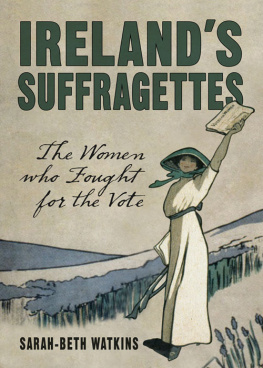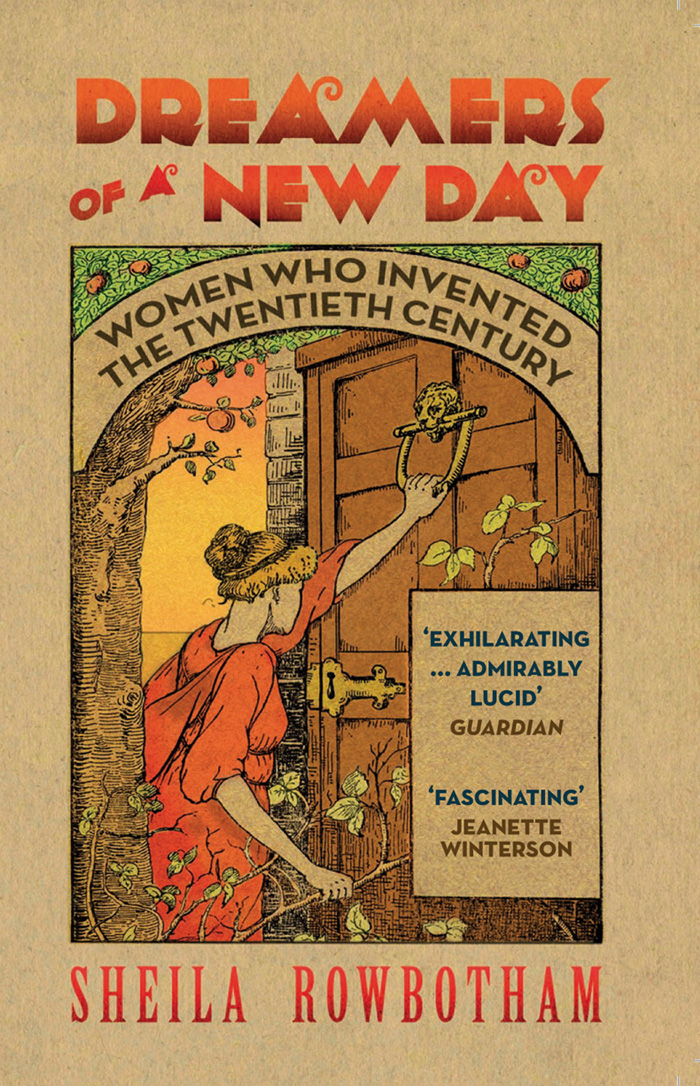Dreamers of a New Day
Dreamers of a New Day
Women Who Invented the Twentieth Century
SHEILA ROWBOTHAM

First published by Verso 2010
Sheila Rowbotham 2010
All rights reserved
The moral rights of the author have been asserted
1 3 5 7 9 10 8 6 4 2
Verso
UK: 6 Meard Street, London W I F O EG
US: 20 Jay Street, Suite 1010, Brooklyn, NY 11201
www.versobooks.com
Verso is the imprint of New Left Books
ISBN-13: 978-1-84467-613-2
British Library Cataloguing in Publication Data
A catalogue record for this book is available from the British Library
Library of Congress Cataloging-in-Publication Data
A catalog record for this book is available from the Library of Congress
Typeset in Bembo by Hewer Text UK Ltd, Edinburgh
Printed in the US by Maple Vail
Contents
List of Illustrations
Introduction
In 1902, an American suffragist and novelist, Winifred Harper Cooley, dreamed of a twenty-first century without oil trusts, sweatshops or slums. This future was revealed by a radiant woman in flowing, graceful robes, who explained that in a hundred years time, no one would be tramping the streets without a home, or be unemployed. By then the worlds labour would be shared equally, so that each individual only worked five hours a day.
This capacity for optimistic imagining was characteristic among reformers and radicals in both America and Britain during the late nineteenth and early twentieth centuries. Running parallel with campaigns for womens suffrage and involving both feminists and anti-feminists, a diffuse but resilient attempt to alter daily life and culture was underway. From the 1880s, thought interacted with action in a whirl of speculation, proposals, policies and utopian visions. Exploratory and adventurous aspirations were expressed not only in books and articles, but through movements, organizations, local groups and projects. Women, along with men, were swept up by the impetus for changing everyday life. The conviction that social circumstances could be altered and that ways of living, as well as looking, might be transformed, contributed to the can-do ethos which was particularly potent in the USA.
The ferment was encouraged by startling technological developments, paradigm-changing discoveries in science and iconoclastic forms of art. These, along with an unprecedented level of global trade and investment, new ways of organizing production and consumption, changes in communications and the growing ascendancy of urban life, fostered a belief that a decisive rupture with the past was occurring. However, the rapid pace of change brought daunting problems in its wake. Increased competition and falling profits resulted in periods of depression through the 1870s and 1880s, which persisted into the mid-1890s; inflation followed from the late 1890s. Confronted by the unbridled power of large-scale corporations, mushrooming city slums, the destruction of rural life, workers responded with a new mood of militancy, while sections of the middle class, troubled by the conditions of the poor, also questioned class inequality. Women, as well as men, felt a moral compulsion to intervene, bringing their own experiences to bear on the dissident economic and social perspectives which were emerging. And when they encountered opposition to their engagement in the public arena, middle-class and working-class women invoked motherly care, moral cleansing and class loyalty to justify stepping beyond the prescribed womanly sphere.
At the same time, womens demands for access to employment and for political rights were pulling women outwards; calling into question their assumed dependence on and subordination to men. The suffrage movement inspired some women to resist other forms of injustice and inequality, and effect change in social and economic life more broadly. It also carried with it an internal promise of self-actualization and human dignity, encouraging efforts to alter personal ways of being. In moving towards a new role in the public sphere, feminists disturbed cultural assumptions about how women could be and what they could do in their own lives.
The bicycle became the symbol of this self-propelled female vanguard contesting physical and psychological spaces. The bicycle is doing more for the independence of women than anything expressly designed to that end, declared the British social reformer Clementina Black in the Womans Signal in 1895. Nobody expects a woman to go cycling escorted by a chaperon, a maid, or a footman.bicycle, women acting alone without men-folk to protect them were deemed liable to fall.
External demands for change were apt to boomerang back into the personal realm of being and relating, further breaching the demarcation between private and public life. Progress through education or access to employment revealed new unforeseen cultural and psychological barriers; radical movements, and the backlash these evoked, combined to relate resistance in one arena to rebellion in others. From the 1880s to the 1920s, three generations of women in both the United States and Britain can be seen challenging many different aspects of womens subordination and questioning how aspects of human experience were zoned and defined. The American social reformer Mary Beard summed up this integrated vision in 1912: Everything that counts in the common life is political.
The women who tried to alter everyday life and culture along with their own destinies were both dreamers and adventurers, for they explored with only the sketchiest of maps and they headed towards the unknown, courageously interrogating assumed behaviour in personal relationships and in society. They challenged gender divisions, sexual attitudes, family arrangements, ways of doing housework and mothering, existing forms of consumption and paid working conditions. They proposed new approaches to the body, alternative kinds of clothing and food; they turned their attention to how space was used in cities, to the time needed for leisure, to the purposes of work. From their rejection of the familiar came iconoclastic projects, demands and concepts. En route they criticized existing methods of education, delineated new areas of knowledge and subverted existing assumptions about culture. The American writer Kate Chopin crystallized womens extraordinary bid for new identities, new relationships and new mores in her new woman novel of 1899, The Awakening.
The potpourri of rebels and reformers dreaming of a new day did not comprise a cohesive group or even a tendency. Their revolt arose from disparate sources: they were driven by fear of moral and social disintegration, by anger against injustice, by visions of utopia and by a resolve to improve everyday living and relating. Nor were they united in outlook or intent. Some aspired to alter existing culture, others to transform the world; some wished to regulate and improve, others to release and liberate. They were, moreover, shaped by dissimilar social backgrounds. Some were upper middle class and keen to cast off privilege; others were members of the growing in-between strata, educated yet not quite ladies, uprooted, mobile, and liable to be iconoclastic. Among their ranks, working-class women striving for solidarity stood alongside African-American women linking gender to their emancipation as a race.
The American and British dreamers of a new day came too from opposing political cultures. They might be women, but they were also free thinkers, anarchists, socialists, feminists, communists, moral and social reformers, liberals, progressives, labour movement women, bohemians, sexual radicals or eugenic enthusiasts. Their views ranged from extreme forms of individualism to advocacy of association and collectivism. Some were mystics searching for inner change, while others wanted to concentrate on external reforms. There were women who considered that their sex carried special values which could improve the male public sphere, and others who saw identity as always in flux. Some emphasized social change rather than the suffrage, while others believed that the suffrage would lead to wider reform. Some believed firmly in state planning, others in spontaneity and direct action. There were advocates of expanded productivity and consumption, and women who clung on to the nostrums of thrift and self-help. Some imagined technology taking over daily life, while others propounded the simplification of life.









